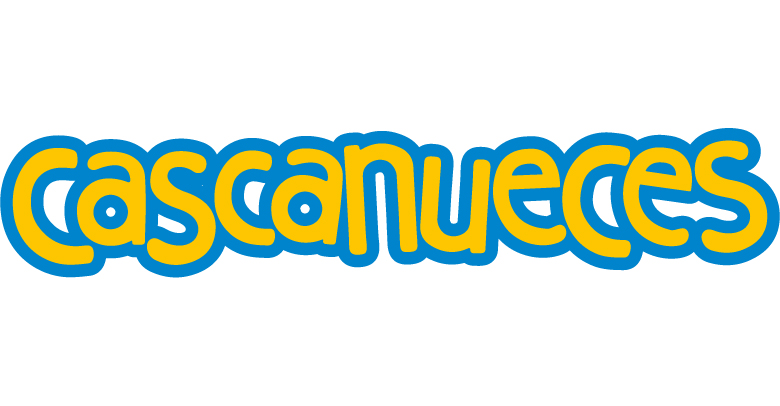Imdur dosages: 40 mg
Imdur packs: 30 pills, 60 pills, 90 pills, 120 pills, 240 pills, 180 pills, 360 pills
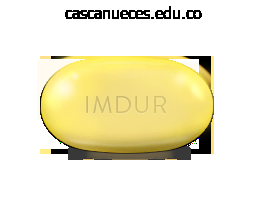
Purchase imdur online now
That response surfaces characterize the entire spectrum of drug effect is an important benefit of this approach in anesthesia scientific pharmacology. Anesthesia follow is unique in that anesthetists must goal profound drug results throughout an operation after which reverse the impact quickly when the operation is finished. Three totally different mathematical approaches have been chosen-Greco, Minto, and Bouillon et al. A is an additive interplay between two agonists; B is a synergistic interaction between two agonists; C is an infra-additive interaction between two agonists; D is the interplay between a partial agonist and a full agonist; E is the interaction between an agonist and antagonist; F is the interaction between an inverse agonist and a full agonist. The three approaches are empirical in that they make no assumption concerning the nature of the underlying interaction. Interactions could be applied to each of the variables in the sigmoid Emax equation individually. This facilitates describing interactions between these drugs whose particular person response curves are diverse by way of curve shape, slope, and maxima, and permits the investigator to determine the required level of model complexity, although the mannequin has been criticized for having too many parameters. Suitable methodology and energy evaluation for response surface trial design have been determined by simulation analysis. It is crucial that trials cowl many of the surface for robust models to be derived. The method is appropriate for both quantal data where sufferers are given a range of fixed doses, or steady information the place the entire dose-response curve could be described in every patient. This diploma of synergy is found when propofol and midazolam are given collectively for hypnosis. Studying simply 20 sufferers has been found sufficient to characterize response surfaces utilizing a continuous measure such as bispectral index. Drug concentration Primary agent Washout Secondary agent Washout Washout Period 1 Period 2 Period 3 Study plan for individual patients15 1. Use stepped infusions of first drug, await regular state, make effect measurements such as bispectral index, motion to ache, blood stress, etc. Time 100 Drug impact seventy five 50 25 zero 2500 20 0 15 00 1 50 0 B a hundred seventy five 50 25 0 2500 20 zero 15 00 1 50 zero B 100 seventy five 50 25 0 2500 20 0 15 00 1 50 zero B Drug A Drug A Drug A Three designs for covering the surface utilizing continuous data8 the criss-crossed design (center) requires fewer sufferers to capture the interplay than do the alternative designs (using mounted concentrations of one drug with various concentrations of the second drug, or various both drug concentrations together in a set dosing ratio). The figure shows the interaction between remifentanil and sevoflurane for a noxious stimulus. The three-drug combination triggered no extra synergy than anticipated from the paired interactions however would seem as a deeper hollow within the parameter floor if it existed. The blue dot on the "floor" of the graph signifies the nadir of the three-drug mixture floor. The type of interplay is identified by comparing an additive model, where the interplay parameter is excluded or is made to equal zero, with one which has an active interplay parameter. The alternative of the most effective model is made by visible inspection of the floor, comparison of residual plots, and statistical testing of the reduction in log likelihood between associated models. Pharmacologic Basis of Drug Interactions the interactions described on this chapter are based on observational data somewhat than being derived from an understanding of underlying pharmacologic mechanisms. Synergy may also be current for undesirable unwanted effects such as hypotension or respiratory melancholy. Evidence helps both pharmacokinetic and pharmacodynamic explanations for drug synergy. The most intensive research into the mechanisms for synergy is for propofol and midazolam. In the presence of propofol, midazolam concentrations are increased by 25%; the reverse additionally holds true for propofol within the presence of midazolam. Observations of sedative and hemodynamic endpoints found synergy for sedation and additivity for hemodynamic results. The intensive study of this drug combination utilizing a wide range of strategies and the consistency of the discovering of synergy also indicates that the various strategies used to examine interactions are robust. It is unknown whether this impact was because of pharmacokinetic or pharmacodynamic causes.
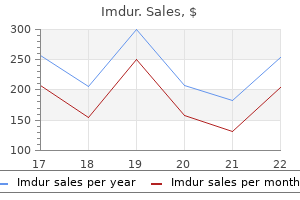
Purchase genuine imdur line
Intraoperative modulation of alveolar macrophage function during isoflurane and propofol anesthesia. Volatile anesthetics differentially have an result on immunostimulated expression of inducible nitric oxide synthase: position of intracellular calcium. Inhibition of superoxide production and Ca2+ mobilization in human neutrophils by halothane, enflurane, and isoflurane. Formation of trifluoroacetylated protein antigens in cultured rat hepatocytes exposed to halothane in vitro. Biotransformation of halothane, enflurane, isoflurane, and desflurane to trifluoroacetylated liver proteins: affiliation between protein acylation and hepatic harm. Autoantibodies related to volatile anesthetic hepatitis found within the sera of a large cohort of pediatric anesthesiologists. Long-duration low-flow sevoflurane and isoflurane effects on postoperative renal and hepatic function. Assessment of low-flow sevoflurane and isoflurane results on renal operate utilizing sensitive markers of tubular toxicity. Intrarenal fluoride manufacturing as a possible mechanism of methoxyflurane nephrotoxicity. Changes in plasma creatinine concentration after cardiac anesthesia with isoflurane, propofol, or sevoflurane: a randomized medical trial. Identification of a mutation in porcine ryanodine receptor associated with malignant hyperthermia. A factorial trial of six interventions for the prevention of postoperative nausea and vomiting. Sevoflurane induces less cerebral vasodilation than isoflurane at the identical A-line autoregressive index stage. The anesthetic properties of xenon in animals and human beings, with further observations on krypton. Volatile anaesthetics and the atmosphere: atmospheric lifetimes and atmospheric results of halothane, enflurane, isoflurane, desflurane and sevoflurane. The impact of intravenously administered dexmedetomidine on perioperative hemodynamics and isoflurane necessities in sufferers undergoing belly hysterectomy. Esmolol potentiates reduction of minimal alveolar isoflurane concentration by alfentanil. Response floor modeling of alfentanil-sevoflurane interplay on cardiorespiratory control and bispectral index. Melanocortin-1 receptor gene variants affect pain and mu-opioid analgesia in mice and people. The melanocortin-1 receptor gene mediates femalespecific mechanisms of analgesia in mice and people. Increased sensitivity to thermal ache and reduced subcutaneous lidocaine efficacy in redheads. Cognitive function after sevoflurane- vs propofol-based anaesthesia for on-pump cardiac surgery: a randomized managed trial. Anaesthetic medication and survival: a Bayesian network meta-analysis of randomized trials in cardiac surgical procedure. Inhibitory effects of desflurane and sevoflurane on oxytocin-induced contractions of isolated pregnant human myometrium. Inhalation anaesthesia is cost-effective for ambulatory surgery: a scientific comparability with propofol throughout elective knee arthroscopy. Clinical and financial choices in anaesthesia for day surgical procedure: a prospective randomised managed trial. Randomized managed trial of complete intravenous anesthesia with propofol versus inhalation anesthesia with isoflurane-nitrous oxide: postoperative nausea with vomiting and financial evaluation. Comparison of desflurane with propofol in outpatients present process peripheral orthopedic surgery. Postoperative restoration after desflurane, propofol, or isoflurane anesthesia amongst morbidly overweight sufferers: a prospective, randomized study. Recovery profile, prices, and affected person satisfaction with propofol and sevoflurane for fast-track office-based anesthesia. Fast-track office-based anesthesia: a comparability of propofol versus desflurane with antiemetic prophylaxis in spontaneously breathing sufferers. Effects of halothane, enflurane, and isoflurane on hypoxic pulmonary vasoconstriction in rat lungs in vitro.
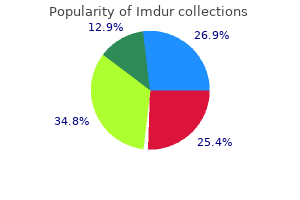
Imdur 20 mg amex
Spirometry: Measurement by means of a spirometer of the air coming into and leaving the lungs. Sputum smear: Microscopic examination on a glass slide of fabric produced from the lungs usually collected through coughing. Stable disease: In cancer, neither adequate shrinkage to qualify for partial response nor enough improve to qualify for progressive disease. Status epilepticus: Continuous seizure exercise lasting more than 5 minutes or two or more seizures without complete restoration of consciousness. Steatohepatitis: A extreme type of liver disease attributable to fats deposition in the liver, characterised by hepatic irritation that will quickly progress to liver fibrosis and cirrhosis. Steatorrhea: Passage of fats in large quantities within the feces, because of failure to digest and absorb it. Used to describe a thought and speech sample wherein the individual by no means gets to the point or answers the query. Tardive dyskinesia: A persistent disorder of the nervous system characterised by involuntary jerky or writhing movements of the face, tongue, jaws, trunk, and limbs, normally growing as a late occurring aspect effect of prolonged therapy with antipsychotic medicine. Targeted remedy: A type of treatment that makes use of drugs or different substances to identify and assault specific types of most cancers cells with much less harm to regular cells. Terminal secretions: the noise produced by the oscillatory movements of secretions within the higher airways in affiliation with the inspiratory and expiratory phases of respiration. Tetany: A situation marked by intermittent muscular spasms, caused by malfunction of the parathyroid glands and a consequent deficiency of calcium. Third spacing: Fluid moving from the intravascular space into the interstitial or "third" area or right into a physique cavity. Thought-blocking: Speech is halted, usually in mid-sentence, after which picked up later, often at another level in the thought course of. Thrombin: An enzyme fashioned from prothrombin which converts fibrinogen to fibrin and in addition activates platelets. Thrombocytopenia: A situation whereby the variety of circulating platelets are abnormally low due to decreased manufacturing of latest cells, possibly secondary to medication toxicities. Thrombolysis: the process of enzymatically dissolving or breaking up a blood clot. Thrombophlebitis: Inflammation of a blood vessel (eg, vein) related to the stimulations of clotting and formation of a thrombus (or blood clot). Tissue issue is a naturally occurring thromboplastin and is used within the prothrombin time take a look at. Thrombosis: A condition in which blood changes from a liquid to a solid state and produces a blood clot. Thrombotic thrombocytopenic purpura: Condition characterised by formation of small clots inside the circulation ensuing within the consumption of platelets and a low platelet depend. Thrombus: Blood clot hooked up to the vessel wall and consisting of platelets, fibrin, and clotting elements. A thrombus might partially or completely occlude the lumen of a blood vessel compromising blood circulate and oxygen supply to distal tissue. Thyroglobulin: A thyroid hormone-containing protein, usually stored within the colloid inside the thyroid follicles. Thyroid peroxidase: Enzyme that catalyzes the organification and coupling steps of thyroid hormone synthesis. Thyrotoxicosis is usually brought on by hyperthyroidism, a situation by which the thyroid gland produces extreme levels of thyroid hormone. Tonometry: A method by which the cornea is indented or flattened by an instrument. The stress required to achieve corneal indentation or flattening is a measure of intraocular stress. Tophi: Collections of monosodium urate crystals that develop in tissues and customarily appear as agency nodules under the pores and skin. Total stomach hysterectomy and bilateral salpingooophorectomy: Surgical removing of the uterus, fallopian tubes, and ovaries which outcomes in immediate menopause.
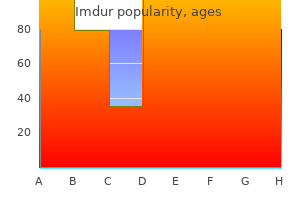
Buy generic imdur 40mg online
Reducing stress responses within the pre-bypass part of open heart surgical procedure in infants and young kids: a comparison of various fentanyl doses. Use of intranasal fentanyl in youngsters undergoing myringotomy and tube placement during halothane and sevoflurane anesthesia. Remifentanil requirements throughout sevoflurane administration to block somatic and cardiovascular responses to skin incision in children and adults. Safety and efficacy of remifentanil in craniosynostosis repair in youngsters lower than 1 12 months old. Pharmacodynamics and pharmacokinetics of high-dose sufentanil in infants and children present process cardiac surgery. Patient-controlled analgesia in the pediatric inhabitants: morphine versus hydromorphone. Pain administration in kids: part 2 - A transition from codeine to morphine for average to extreme pain in kids. Dose-response of rocuronium bromide in youngsters anesthetized with propofol: a comparison with succinylcholine. Myotonic and neuromuscular blocking results of increased doses of suxamethonium in infants and kids. Duration of motion of vecuronium in infants and youngsters anaesthetized without potent inhalation agents. Reversal of rocuroniuminduced neuromuscular blockade with sugammadex in pediatric and adult surgical sufferers. Minimum alveolar focus of isoflurane for tracheal extubation in deeply anesthetized kids. End-tidal sevoflurane concentration for tracheal extubation and pores and skin incision in kids. The discount in minimum alveolar concentration for tracheal extubation after clonidine premedication in youngsters. Fentanyl augments block of sympathetic responses to pores and skin incision throughout sevoflurane anaesthesia in youngsters. Minimum alveolar concentration of desflurane and hemodynamic responses in neonates, infants, and youngsters. Minimum alveolar focus of desflurane for tracheal extubation in deeply anaesthetized, unpremedicated youngsters. Propofol infusion for induction and maintenance of anesthesia in aged sufferers: restoration and hemodynamic profiles. Use of goal managed infusion to derive age and gender covariates for propofol clearance. Side results of opioids throughout short-term administration: effect of age, gender, and race. Pharmacodynamics and pharmacokinetics of cisatracurium in geriatric surgical patients. In the case of anesthesia, no single drug has been found to be universally satisfactory and certainly basic anesthesia is now regarded as a set of desirable medical endpoints somewhat than a discrete phenomenon of its own. Useful endpoints embody lack of knowledge and a nice induction and restoration; lack of motion, enough muscle rest, reasonable blood pressure control; and maintenance of homeostasis by suppressing autonomic reflexes whereas balancing the slim therapeutic index of lots of the medicine to guarantee positive outcomes. This idea of multiple drug use was first described by Lundy in 1926, who used the term balanced anesthesia. At the time, use of volatile agents as a sole anesthetic was common, but unacceptable cardiovascular and respiratory melancholy regularly accompanied the high doses required to suppress movement to noxious stimuli-a discovering still true of the risky anesthetics in use right now. A review of the contribution of anesthesia to perioperative mortality discovered evidence to support this notion with the relative danger of dying within 7 days of surgery being 2. Many medication used in anesthesia have overlapping actions and, when given together, can be utilized to produce results distinct from those they create individually. To maximize the scientific utility of any drug, it is important to perceive its effects when used alone and in combination. Propofol alone is efficient at inflicting unconsciousness without intolerable adverse effects. The a lot bigger doses required to prevent movement in response to surgical ache additionally suppress respiration and can unacceptably scale back blood stress.
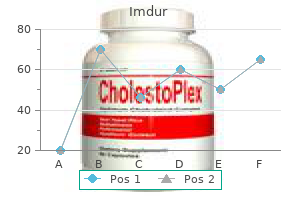
Generic 40 mg imdur amex
Persistent hypertension is handled with antihypertensive medicines as nicely as serial surveillance for recurrence of the pheochromocytoma. Most of the mass of the pancreas is made up of exocrine cells, which secrete an alkaline digestive fluid into the pancreatic duct and duodenum. Comprising 1% to 2% of the mass of the pancreas, inside the pancreatic lobules, are small clusters of endocrine cells-the islets of Langerhans-which embody, and cells. Of endocrine cells, 18% to 20% are cells, which secrete glucagon, and the remaining 5% are cells, which secrete somatostatin. The arterial blood supply to the pancreas consists of branches from the splenic artery and the superior and inferior pancreaticoduodenal arteries. The islets receive 10% to 15% of the pancreatic blood flow; thus, their wealthy vascularization allows quick access for the hormones to be secreted by the islet cells into the bloodstream. Venous drainage leads on to the portal vein of the liver; therefore, the pancreatic hormones undergo first-pass metabolism within the liver before being launched into the systemic circulation. Insulin synthesis begins with an inactive protein, pre-proinsulin, which undergoes cleavage to proinsulin and then to insulin by cleavage of the C-peptide linkage structure. The insulin and C peptide make up secretory granules which are saved in cells and released in response to elevated blood glucose. Overall, insulin has an anabolic impact on track organs and stimulates the synthesis of carbohydrates, fats, and proteins (Table 35. Glucose transporters play a key function within the utilization of glucose mediated by insulin. There are several glucose transporters with variable tissue distributions and features. Glucagon is an amino acid polypeptide hormone secreted by the cells of the islets of Langerhans and performs a significant position in glucose homeostasis by antagonizing the consequences of insulin. Glucagon launch is stimulated by hypoglycemia, high amino acid ranges after amino acid�rich meals intake, epinephrine, and vagal stimulation and is inhibited by increased blood glucose ranges and somatostatin. The main effect of glucagon is to increase serum glucose concentration by causing hepatic gluconeogenesis and glycogen breakdown. The results of glucagon on adipose tissue primarily happen during periods of stress and meals deprivation. It is associated with grownup onset, obesity, delicate levels of hyperglycemia, and insulin resistance. Increased serum glucose concentrations trigger elevated plasma osmolarity and glycosuria, accompanied by water and Na+ loss in the urine (polyuria). Patients turn out to be very dehydrated; elevated thirst (polydipsia) in addition to hunger (polyphagia) are compensatory mechanisms for the "starving" cells that are unable to make the most of glucose. Patients manifest tachypnea, extreme abdominal pain, nausea, vomiting, and altered psychological standing. Hemoglobin A1C ranges are helpful in preoperative evaluation for figuring out patients in danger for perioperative hyperglycemia and further complications. Diabetic autonomic dysfunction has many implications for the affected person present process surgery and anesthesia, because it limits the flexibility of the myocardium to compensate for modifications in volume standing (such as decreased preload) and predisposes patients to cardiovascular instability, hypotension, and sudden cardiac demise. Delayed gastric emptying and risk for aspiration can also be attributed to autonomic dysfunction and the attendant gastroparesis. Multiple studies have illustrated the importance of good glycemic control in surgical patients. The Portland Diabetes Project demonstrated the connection between hyperglycemia within the perioperative period and increased morbidity within the form of increased infections and deep sternal wound infections in addition to elevated mortality. Insulin infusions are extra physiologic, quickly titratable, and easier to management than intravenous insulin boluses. Etomidate has been proven to suppress adrenocortical perform via inhibition of 11-hydroxylase, which is a required enzyme to produce cortisol, corticosterone, and aldosterone. Some imidazole ring�containing drugs are identified to produce a "chemical adrenalectomy" that can be long lasting. The interplay between the fundamental nitrogen within the imidazole ring of etomidate and the heme iron on the lively website of 11-hydroxylase varieties a coordination bond that forestalls the lively site of the enzyme from interacting with its ordinary substrates. Thus, alterations within the structure of the essential etomidate molecule symbolize a path towards elevated hypnotic potency, shorter-acting clinical profile, and less adrenal suppression. Catecholamine launch plays a crucial position within the stress response to perceived or actual bodily or psychological injury, including hemorrhage, severe hypoglycemia, trauma, surgical trauma, and fear. Intensive intraoperative insulin remedy versus typical glucose administration throughout cardiac surgery.
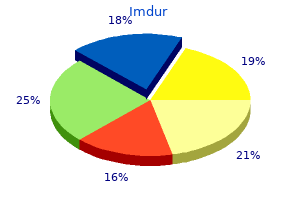
Safe imdur 40 mg
When pure vasodilation is the cause for post�cardiopulmonary bypass hypotension, vasopressin is an excellent selection because it acts independently of the adrenergic receptors and as such can be expected to be additive with catecholamines. In contrast, dopamine, epinephrine, and to a somewhat lesser extent, norepinephrine have a protracted historical past of profitable use in supporting hemodynamics following cardiopulmonary bypass. Emerging Developments Understanding the pharmacogenetic basis of the variability in response to vasopressors and cardiotonic medication is a main focus of contemporary analysis in this space. Terlipressin, for instance, is a just lately developed long-acting synthetic analog of vasopressin with a half-life of 6 hours. In a small subset of sufferers with catecholamine-resistant septic shock, these receiving a single bolus of terlipressin had significantly much less rebound hypotension during the reduction or cessation of norepinephrine. Levosimendan is at present the only clinically out there calcium sensitizing inodilator. In sufferers with coronary heart failure, it has been proven to cause a rise in stroke quantity and cardiac output with little change in heart fee (see Table 25. Several studies have compared levosimendan with dobutamine in acute decompensated heart failure with blended outcomes. This serves as an example of the variable physiologic response to a given plasma concentration of a vasoactive agent. Their use can facilitate restoration of acceptable hemodynamic parameters following cardiopulmonary bypass. Surviving Sepsis Campaign: international tips for administration of extreme sepsis and septic shock: 2012. Best care of sufferers with sepsis as outlined by a consensus of worldwide specialists. The evidence to be used of various vasoactive medicine in addition to other medical and fluid administration objectives are discussed. A placebo-controlled trial verifying the efficacy of milrinone in weaning high-risk patients from cardiopulmonary bypass. Demonstrates the power of milrinone, even a single dose, to enhance the success of weaning high-risk patients from cardiopulmonary bypass. Highlights the severe complications of topical phenylephrine overdose in addition to the potentially disastrous outcome when phenylephrine overdose is handled with adverse inotropes (blockers or calcium channel blockers). Describes the hemodynamic response to small (5-�g) boluses of epinephrine, including an initial enhance followed by a subsequent decrease in systemic vascular resistance to less than 50% baseline. An glorious example of the response of adrenergic receptors to completely different plasma concentrations of agonist. Shows up to 75-fold interpatient variability in plasma focus when infusing dopamine. Suggests that the balance of fetal oxygen provide and demand could be higher achieved with phenylephrine than ephedrine. This highlights the significance of underlying physiologic state when making an attempt to predict response to a vasoactive substance. Vascular hyporesponsiveness to vasopressors in septic shock: from bench to bedside. On the physiological motion of extracts of pituitary body and sure different glandular organs: preliminary communication. A particular sympathomimetic ergone in adrenergic nerve fibres (sympathin) and its relations to adrenaline and noradrenaline. Dobutamine: development of a model new catecholamine to selectively enhance cardiac contractility. A synthetic preparation possessing biological properties associated with argininevasopressin. Alpha 1-adrenergic receptor subtypes, inositol phosphates, and sources of cell Ca2. Vasopressin: mechanisms of motion on the vasculature in well being and in septic shock. The Arg389Gly Beta1adrenoceptor polymorphism and catecholamine results on plasmarenin exercise. Part 8: Adult Advanced Cardiovascular Life Support: 2010 American Heart Association Guidelines for Cardiopulmonary Resuscitation and Emergency Cardiovascular Care. Effects of dopamine, norepinephrine, and epinephrine on the splanchnic circulation in septic shock: which is finest
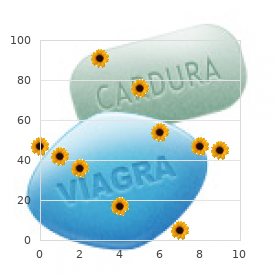
40 mg imdur fast delivery
Peripheral anterior synechia refers to occurrence of synechia with the trabecular meshwork. Synergism: Combination of agents (eg, micro organism, drugs) increasing the activity or severity greater than the sum of the person results. Synovitis: Inflammation of the synovial membrane, usually together with pain and swelling of the affected joint. Systemic inflammatory response syndrome: A advanced pathophysiologic response to an insult such as infection, trauma, burns, pancreatitis, and/or other accidents. T2-weighted magnetic resonance imaging: A setting of the magnetic resonance imaging machine that shows water and comparable fluids corresponding to cerebrospinal fluid as a shiny signal. Tachyphylaxis: Rapidly diminishing response to successive doses of a drug, rendering it less efficient. Tachypneic: Rapid respiration indicated by a rate of greater than 20 breaths per minute. Tachysystole: More than 5 contractions in 10 minutes, averaged over a 30-minute window. Salicylism: A toxic syndrome attributable to extreme doses of acetylsalicylic acid (aspirin), salicylic acid, or any other salicylate product. Signs and signs may include extreme headache, nausea, vomiting, tinnitus (ringing in the ears), confusion, elevated pulse, and elevated respiratory fee. Secondary amenorrhea: Absence of menses for three cycles or 6 months in a beforehand menstruating woman. Seizure: A sudden electrical disturbance of the cerebral cortex, when a inhabitants of neurons fires rapidly and repetitively for seconds to minutes, and electrical discharges are excessively rapid, rhythmic, and synchronous. Sentinel lymph node: the first lymph node to which cancer is more doubtless to unfold from the first tumor. An contaminated emboli containing the causative organism that breaks off from a vegetation or cardiac foci, which then travels to various areas of the body leading to important issues. Severe myoclonic epilepsy of infancy: Resistant epilepsy that occurs in the first yr of life of previously healthy children. Sigmoidoscopy: Visual inspection of the sigmoid colon and rectum with a flexible tube called a sigmoidoscope. Sleep apnea: the temporary stoppage of breathing during sleep; can be attributable to narrowing of the airways ensuing from swelling of soppy tissue. Sleeve gastrectomy: A surgical treatment for weight loss that involves setting up a small gastric "sleeve" however slicing vertically and removing up to 90% of the abdomen. Slit-lamp biomicroscope: An instrument that allows for the microscopic examination of the cornea, anterior chamber lens, and posterior chamber. Source control: Removal of primary supply of infection via surgery, drainage, or removal of infected material. Spasticity: Feelings of stiffness and involuntary muscle contractions or sudden actions. Toxic epidermal necrolysis: A life-threatening skin disorder characterised by blistering and peeling of the highest layer of skin. Transcranial magnetic stimulation: A technique that includes the use of electrical coils on the head to generate a brief magnetic field which reaches the cerebral cortex. Transesophageal echocardiogram: Procedure (Doppler ultrasound) used to generate an image of the guts through sound waves, through a probe launched into the esophagus (rather than the traditional transthoracic view) to get hold of a greater picture of the left atrium. Transferrin saturation: the ratio of serum iron and complete ironbinding capability, multiplied by 100. Translocation: Movement of viable micro organism from gastrointestinal tract into other areas of the body. Transmural: Existing or occurring throughout the whole wall of an organ or blood vessel. Transsphenoidal pituitary microsurgery: Surgery by way of the nasal cavity to access the pituitary gland by way of the sphenoid bone.
References
- Rogers PJ, Richardson NJ, Elliman NA. Overnight caffeine abstinence and negative reinforcement of preference for caffeinecontaining drinks. Psychopharmacol. 1995;120:457-462.
- Kaur N, Mahl TC. Pneumocystis jiroveci (carinii) pneumonia after infliximab therapy: a review of 84 cases. Dig Dis Sci 2007; 52: 1481-1484.
- Dromerick AW, Lang CE, Birkenmeier RL, et al. Very Early Constraint-Induced Movement during Stroke Rehabilitation (VECTORS): A single-center RCT. Neurology 2009;73(3):195- 201.
- Olivier A, Germano I, Cukiert A, Peters TM. Frameless stereotaxy for surgery of the epilepsies: preliminary experience. Technical note. J Neurosurg 81: 629-33, 1994.
- Schwartz MS, Stalberg E. Myasthenia gravis with features of the myasthenic syndrome. Neurology. 1975;25:80-84.
- Bailey, R.L., et al., A dietary screening questionnaire identifies dietary patterns in older adults. J. Nutr., 2007.
- Sasai T, Hiraishi H, Suzuki Y, et al. Treatment of chronic post-radiation proctitis with oral administration of sucralfate. Am J Gastroenterol. 1998;93(9):1593-1595.
- Michallet MC, Preville X, Flacher M, et al. Fu-ctio-al a-tibodies to leukocyte adhesio- molecules i- a-tithymocyte globuli-s. Tra-spla-tatio-. 2003;75(5):657-662.


